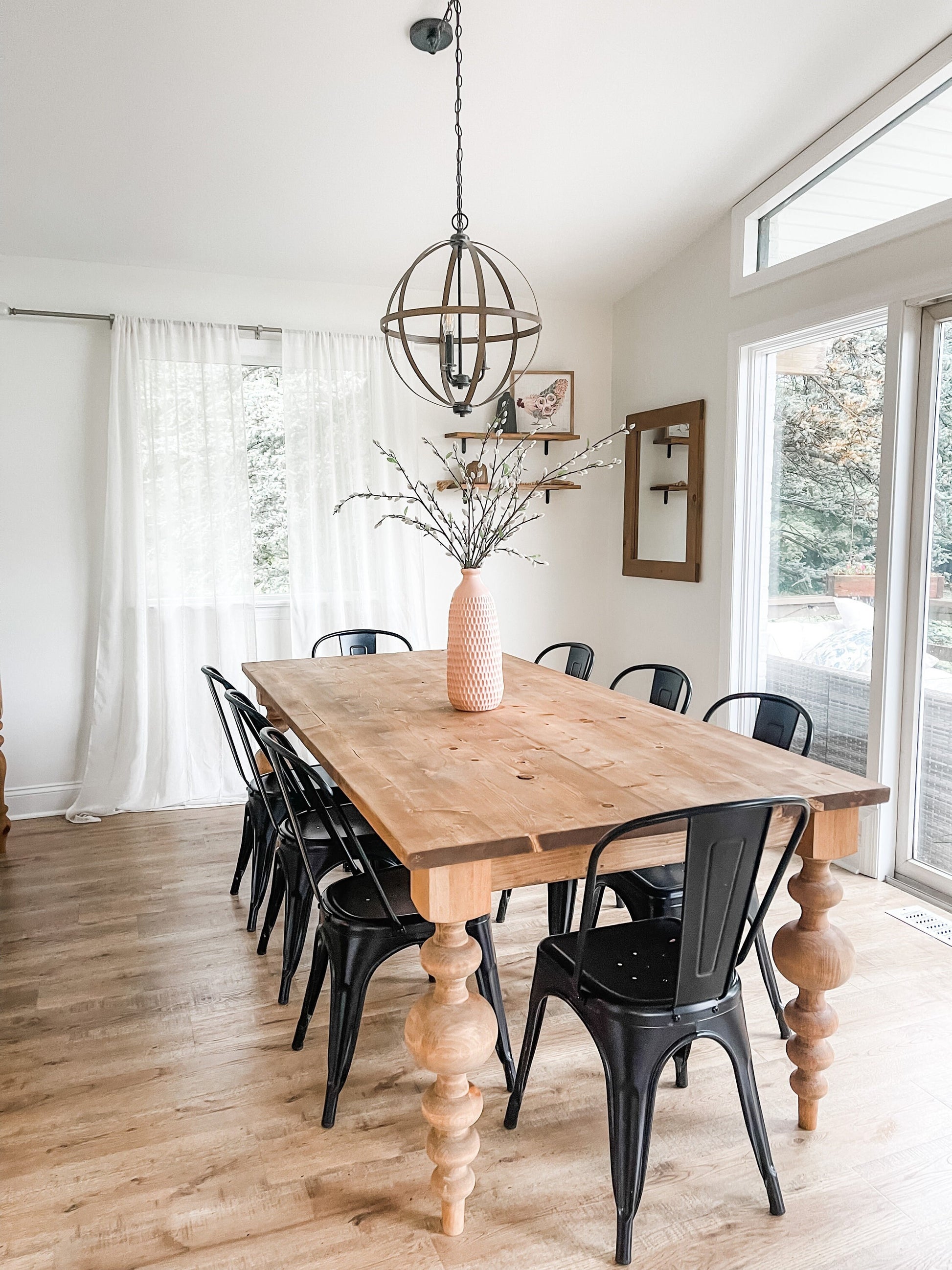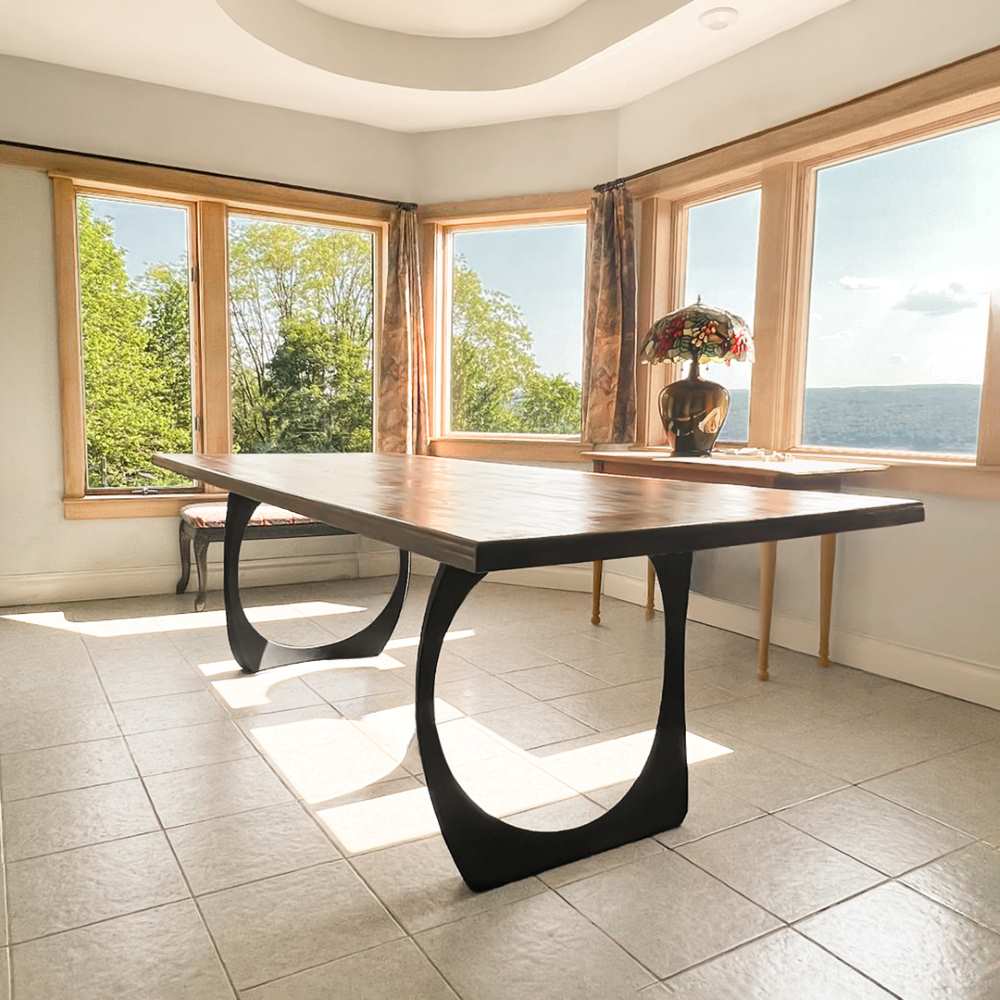How to Maintain and Care for Your Dining Room Table Legs
How to Maintain and Care for Your Dining Room Table Legs
Blog Article
Exactly How to Pick the Perfect Dining-room Table Legs for Your Home Design
Selecting the optimal eating area table legs is a nuanced process that needs mindful consideration of numerous components, including your area constraints, aesthetic preferences, and practical needs. The interaction in between materials, measurements, and designs can considerably influence the setting of your eating location, making it vital to approach this decision carefully.
Assess Your Dining Space
Examining your dining room is important for picking the right table legs that complement both looks and capability. Begin by measuring the measurements of your eating location, including ceiling height, floor room, and proximity to other furnishings. This info will certainly aid identify the suitable dimension and elevation of your table, which straight influences the choice of table legs.
Following, think about the style and layout of your eating room. For example, an open-concept layout might take advantage of table legs that offer aesthetic agility, such as slender metal or acrylic choices. On the other hand, a more typical setting could call for tough wooden legs that provide a feeling of durability.
Examine the existing color scheme and products in your eating location. Harmonizing the table legs with these aspects develops a natural appearance that improves the total decor.
Eventually, a complete evaluation of your eating space will certainly lead you in making an educated choice, making sure that your table legs not only enhance the aesthetic allure yet also offer sensible purposes.
Consider Your Style Preferences
When choosing eating area table legs, it is necessary to mirror on your individual style choices, as they significantly affect the overall aesthetic of your dining space. Your selection of table legs can either enhance or contrast with existing décor, making it important to align them with your favored interior decoration theme.
If your home leans towards a modern visual, consider smooth steel or minimalist wooden legs that give a tidy, uncluttered appearance. For a much more conventional technique, ornate wood legs with intricate makings can add a touch of beauty and sophistication. Industrial styles benefit from robust, basic materials such as redeemed timber and steel combinations, showing a rugged charm.
Furthermore, farmhouse and rustic styles usually favor strong, beefy legs that evoke a sense of warmth and comfort. Conversely, if your design is eclectic, you may pick unique forms or a mix of materials to produce aesthetic interest.

Evaluate Product Options
The option of material for dining room table legs plays an essential function in both sturdiness and aesthetic appeal. Common products consist of wood, steel, and composite options, each offering distinct characteristics that can affect the total look and longevity of your table.
Timber is a timeless option, understood for its warmth and adaptability. Woods like oak and walnut supply phenomenal toughness and can be completed in different spots to match any decor. Nevertheless, softwoods like pine are much more susceptible to damages and scrapes, making them less excellent for high-traffic locations.
Steel legs, typically crafted from steel or aluminum, emanate modernity and commercial appeal. They are resistant and extremely resilient to use, making them appropriate for families with kids or constant gatherings (dining room table legs). Additionally, metal can be ended up in different shades, improving the customization possibilities
Composite materials, such as MDF or laminate, offer price and varied designs. While typically less long lasting than strong timber or metal, they can still provide a trendy appearance and are frequently very easy to maintain.
Ultimately, the material you choose ought to line up with your way of living, visual choices, and the degree of use your dining table will experience.
Determine Height and Size
Selecting the ideal elevation and size for your dining-room table is necessary for both performance and convenience. The standard height for eating tables usually varies from 28 to 30 inches, allowing enough legroom for many people when seated. It is essential to consider the dimensions of your eating area and the kinds of chairs you plan to utilize.

Moreover, take into consideration the proportions of your dining room. A bigger table in a large area can create a grand atmosphere, while a smaller table works well in even more intimate setups. Inevitably, the best height and size will certainly integrate with your general style and enhance the eating experience for you and your visitors.
Explore Customization Possibilities

In addition, the style of the legs can be personalized to fit different styles, such as rustic, contemporary, or commercial. For instance, tapered legs can stimulate a mid-century contemporary feel, while chunky, block-style legs might resonate with conventional or farmhouse design.
Property owners can additionally explore shade finishes, from natural wood discolorations to paint, allowing them dining room table legs to match or contrast with the tabletop and bordering design.
Furthermore, leg elevation can be adapted to accommodate particular seating plans or personal choices, enhancing both convenience and functionality.
Lastly, one-of-a-kind embellishments, such as makings or attractive braces, can additionally personalize the table legs, making the eating experience not simply a dish yet a declaration piece in the home. By taking into find this consideration these modification options, property owners can develop a dining-room table that really reflects their individuality.
Conclusion
Picking the perfect dining room table legs calls for cautious consideration of different elements, including the measurements of the eating area, design preferences, product resilience, and wanted height. Personalization choices additionally enhance the capacity to accomplish a cohesive aesthetic that matches the general decoration. By methodically evaluating these aspects, house owners can ensure that the picked table legs not just fulfill practical demands however also add positively to the eating experience and ambiance of the home.
Choosing the ideal dining space table legs is a nuanced process that calls for careful consideration of different components, including your room restrictions, aesthetic preferences, and useful needs.Analyzing your dining area is vital for choosing the right table legs that enhance both appearances and functionality.When figuring out size, determine the location where the table will certainly be positioned to ensure it fits pleasantly, permitting for at least 36 inches of clearance around the table for very easy movement. A larger table in a sizable area can develop a grand official statement setting, while a smaller table works well in even more intimate setups.Selecting the ideal eating room table legs needs careful factor to consider of various factors, consisting of the measurements of the dining room, design choices, material durability, and desired elevation.
Report this page